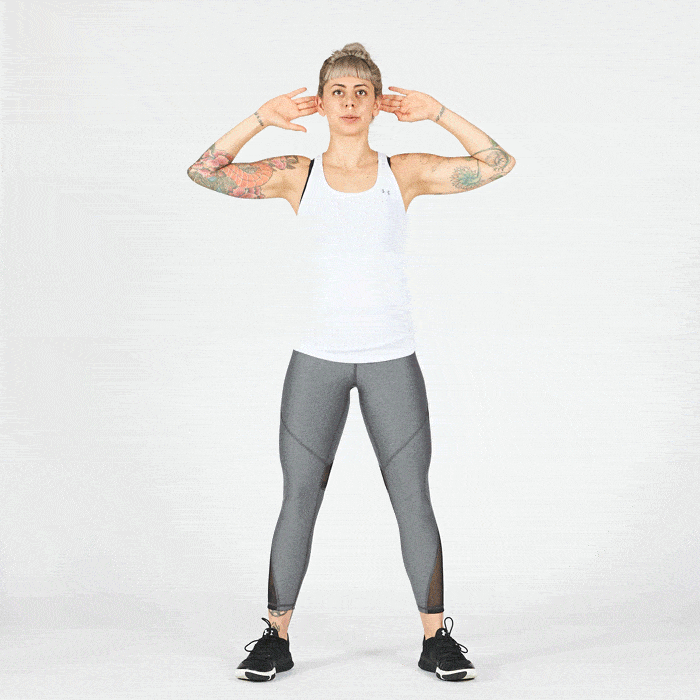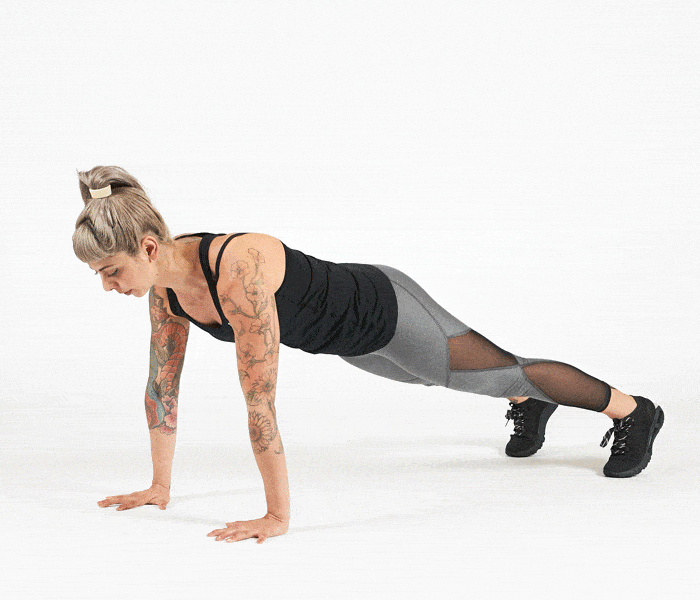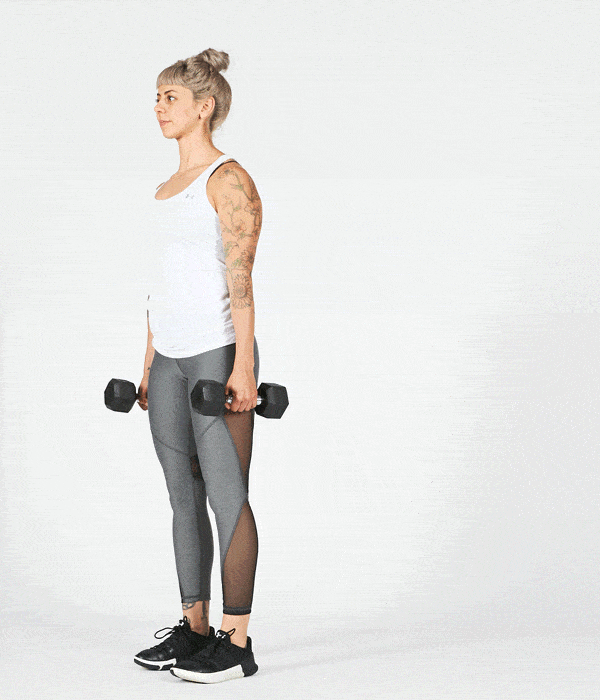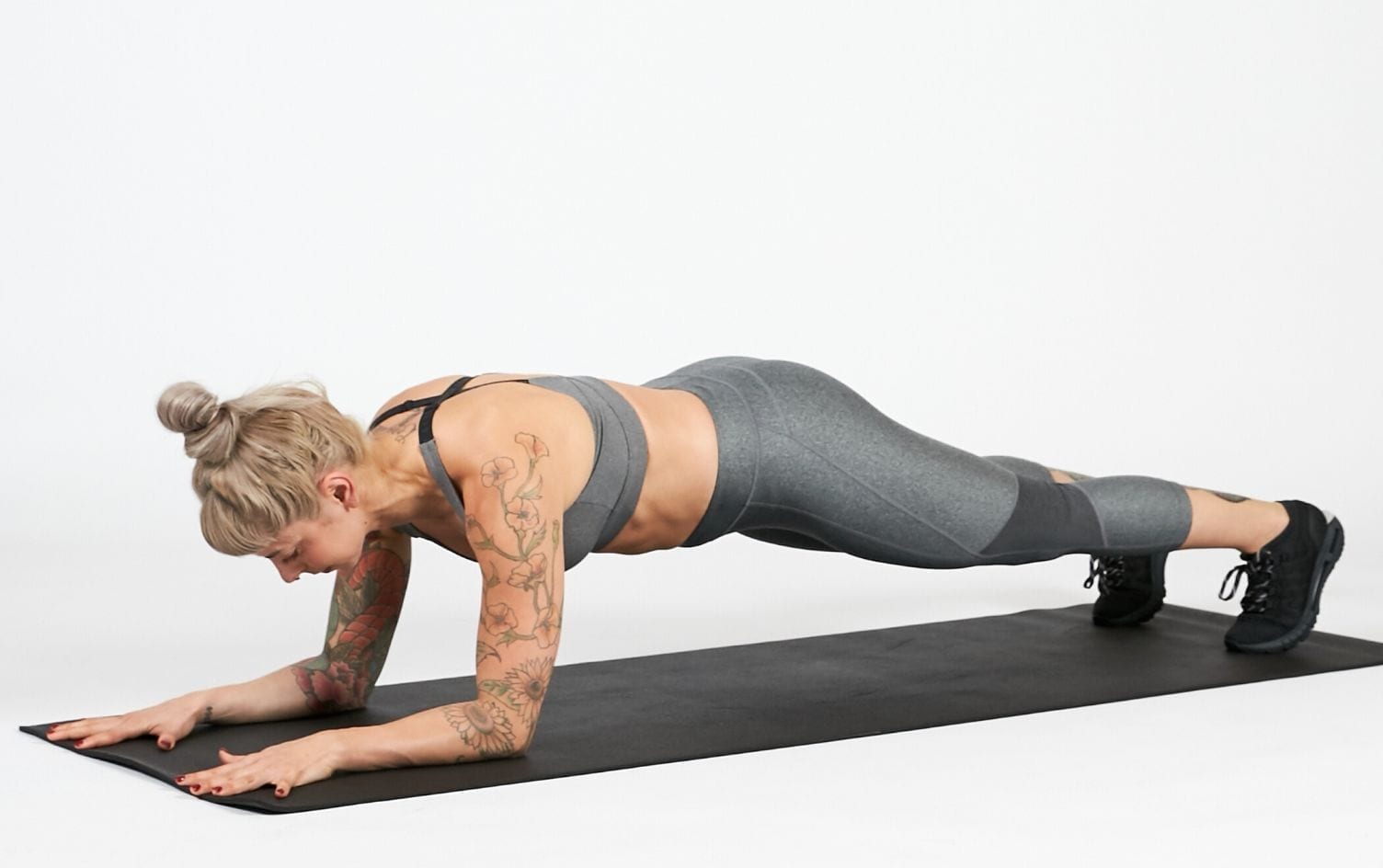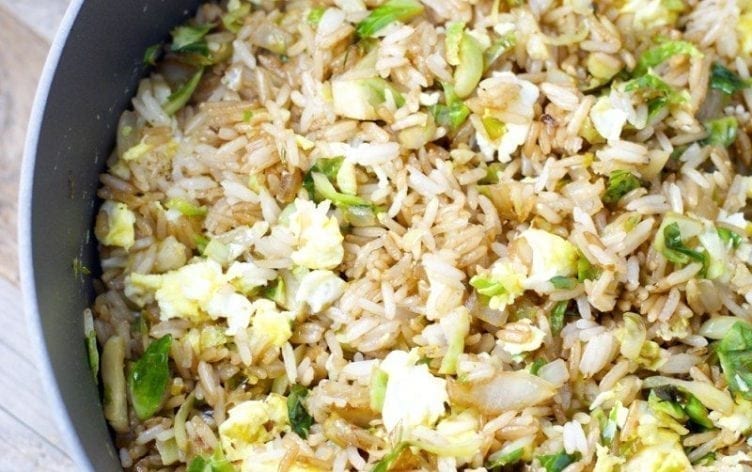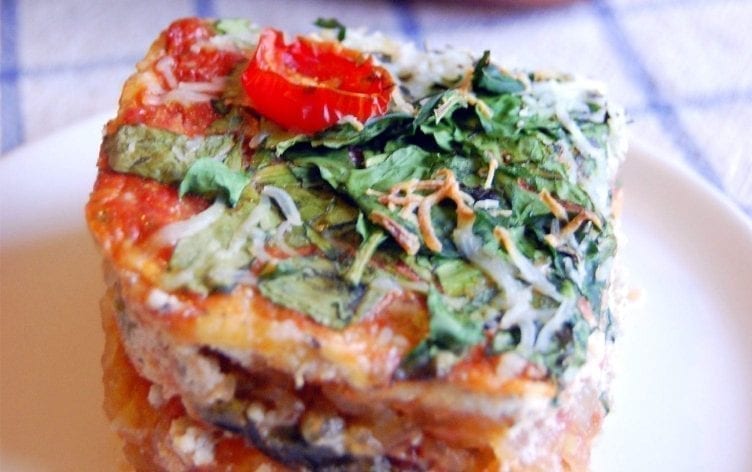Losing weight—and keeping the pounds off—isn't a quick or easy process, but a few simple diet tricks
can be a big help along the way. Our favorite? Eating lots of protein, fiber, and healthy carbs, which boost your metabolism
and keep you feeling energized and satisfied.
1. BUTTERNUT SQUASH BLACK BEAN CHILI
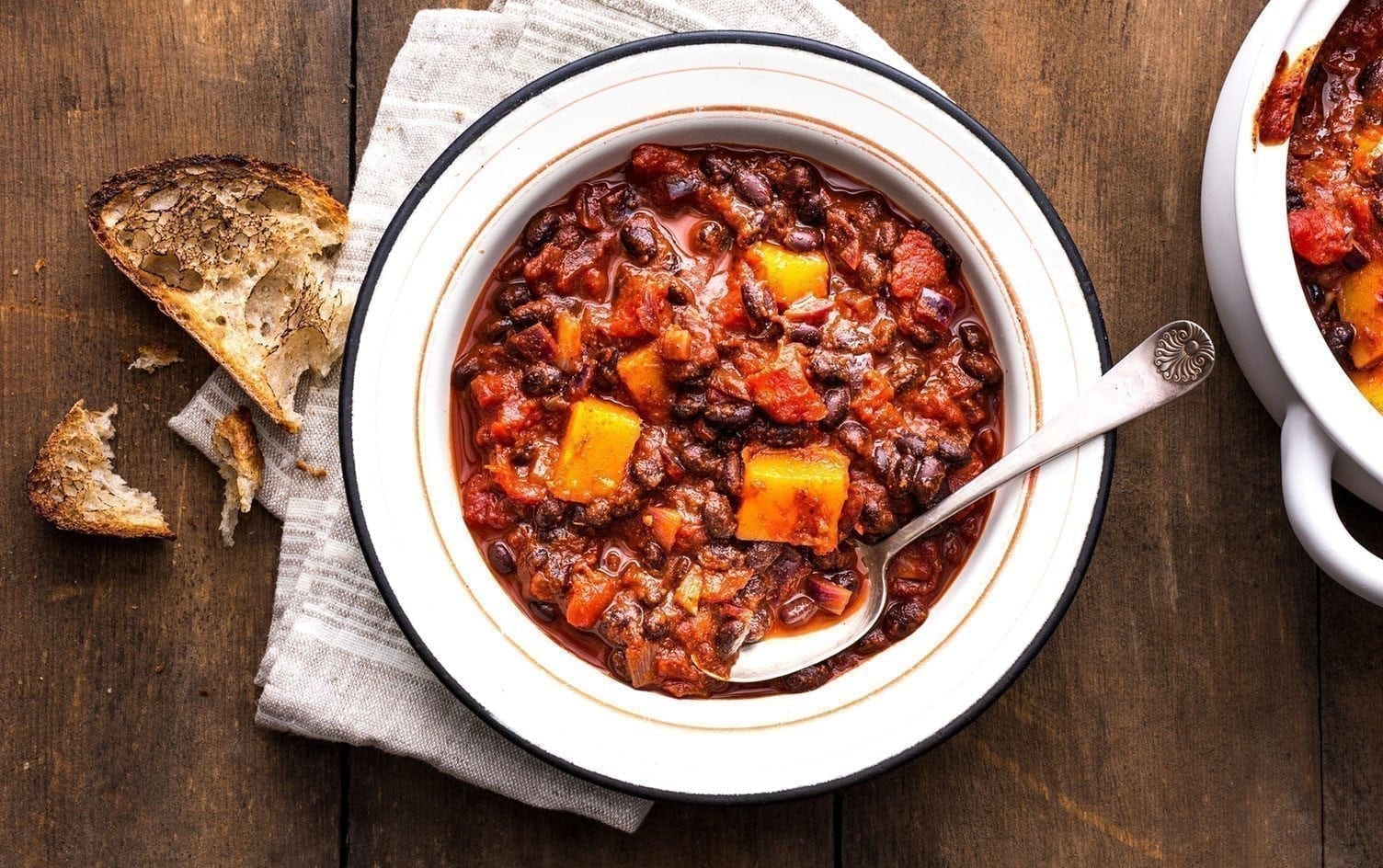
Nutrition (per serving): Calories: 281; Total Fat: 0g; Saturated Fat: 0g; Monounsaturated Fat: 0g; Cholesterol: 0mg; Sodium: 251mg; Carbohydrate: 56g; Dietary Fiber: 20g; Sugar: 3g; Protein: 15g
This vegetarian chili calls for hearty butternut squash and black beans, which means it’s high in fiber. One serving provides more than half of your fiber quota for the day and has 15 grams of plant-based protein.
Ingredients
- 2 cups (300g) butternut squash, diced
- 2 15-ounce (425g) cans black beans, drained
- 1 red onion, diced
- 1 15-ounce (425g) can diced tomatoes
- 1 15-ounce (425g) can crushed tomatoes
- 2 tablespoons chili powder
- 2 tablespoons ground cumin
- 2 tablespoons smoked paprika
Directions
Place all ingredients in a large stockpot and simmer until butternut squash is tender and the flavors have melded about 30–40 minutes.
2. CRISPY BRUSSELS SPROUTS FRIED RICE
Nutrition (per serving): Calories: 236; Total Fat: 10g; Saturated Fat: 2g; Monounsaturated Fat: 4g; Cholesterol: 93mg; Sodium: 496mg; Carbohydrate: 31g; Dietary Fiber: 2g; Sugar: 2g; Protein: 7g
Brussels sprouts lovers, rejoice! Maebells’ crispy fried rice is loaded with flavorful bits of this trendy veggie. It’s quick (ready in 15 minutes!) and keeps dinner prep simple. Brussels sprouts are a cruciferous vegetable jam-packed with vitamins K and C. To make this a complete meal, add grilled chicken, shrimp or tofu.
Ingredients
- 2 teaspoons minced garlic
- 2 tablespoons toasted sesame oil
- 2 cups (400g) cooked jasmine rice (certified gluten-free if necessary)
- 2 cups (200g) shredded Brussels sprouts
- 1 small onion, chopped
- 2 tablespoons soy sauce (certified gluten-free if necessary)
- 2 eggs, beaten
Directions
Heat a large skillet or wok to medium heat.
Add the sesame oil and minced garlic. Sauté garlic until fragrant, about 20–30 seconds.
Add the shredded Brussels sprouts. Cook for at least 30 seconds without stirring, until they start to brown slightly.
Once they start to crisp up, stir the sprouts, then add the onion and cooked rice. Let sit for 30 seconds before stirring.
Stir the rice mixture, and let cook for at least one minute, until the onion is tender.
Stir in the soy sauce, and cook for 30 seconds more.
Push the fried rice to one side of the pan, add the eggs, scramble and stir into rice mixture.
3. PUMPKIN SPICE PANCAKES
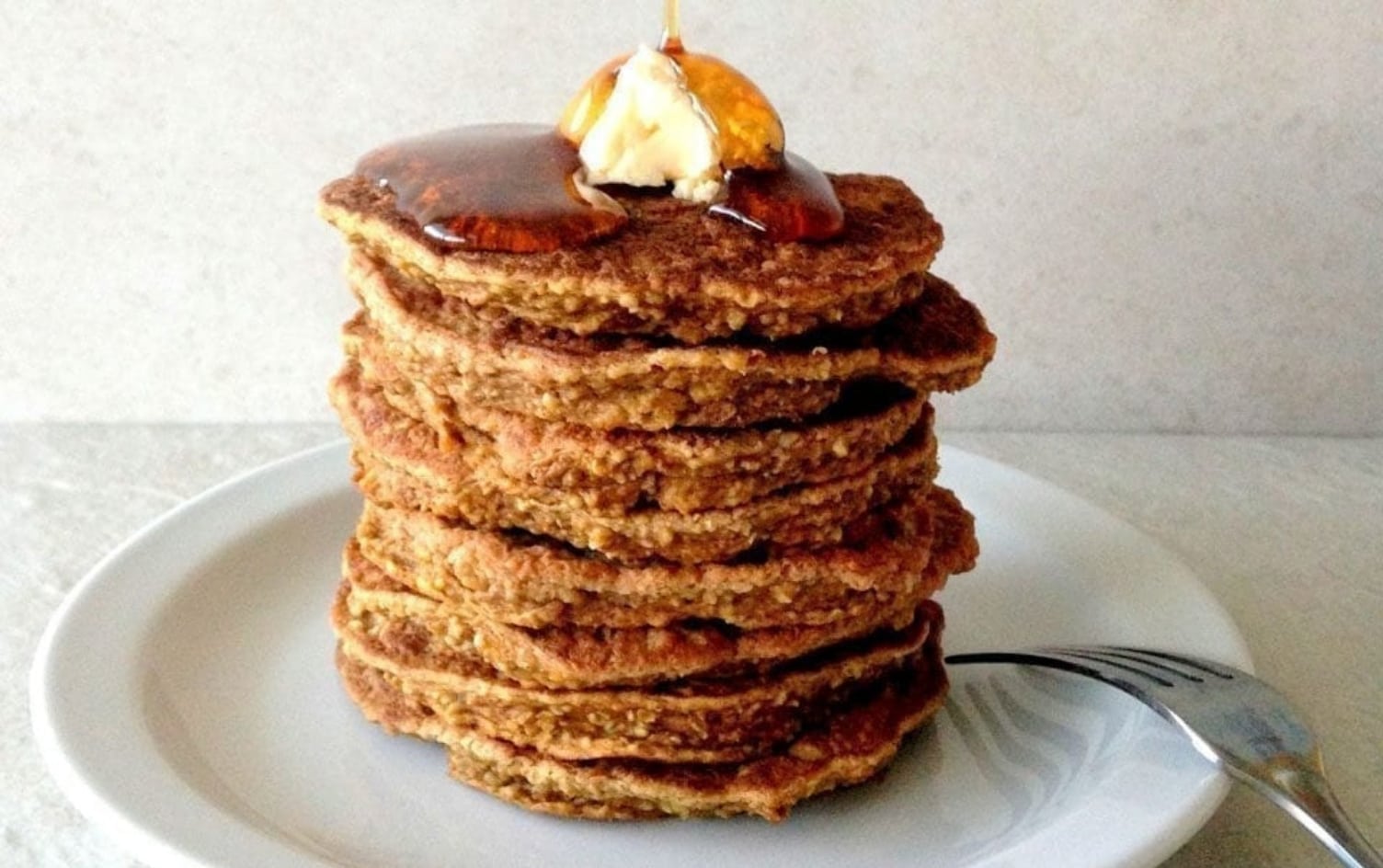
Nutrition (per serving): Calories: 237; Total Fat: 12g; Saturated Fat: 7g; Monounsaturated Fat: 1g; Cholesterol: 106mg; Sodium: 497mg; Carbohydrate: 23g; Dietary Fiber: 5g; Sugar: 2g; Protein 8g
With pumpkin spice lattes, pumpkin butter, pumpkin pie and pumpkin everything, we know you’re going to see enough pumpkin recipes to last you a lifetime. In that spirit, we bring you these pumpkin spice pancakes courtesy of the Wheatless Kitchen
. Thick, hearty pancakes made from oats and pumpkin puree packs the dish with plenty of fiber and vitamin A. These pancakes are gluten-free but can easily be enjoyed by anyone with a wholesome love for pumpkins!
Ingredients
- 3/4 cup (90g) oat flour (certified gluten-free if necessary; all-purpose flour will also work)
- 1/4 cup (22g) whole oats (certified gluten-free, if necessary)
- 1 cup (125g) pumpkin puree
- 2 large eggs
- 1/4 cup (60ml) unsweetened vanilla almond milk
- 1 teaspoon vanilla extract
- 1/2 teaspoon ground ginger
- 1/2 teaspoon cinnamon
- 1/2 teaspoon pumpkin spice
- 1/2 teaspoon salt
- 1/2 teaspoon baking soda
- 2 tablespoons coconut oil (or other cooking oil of choice)
Directions
Preheat skillet or stovetop griddle pan on medium heat. In a large bowl, combine all of the ingredients with the exception of the coconut oil and whisk until well combined. Melt coconut oil in the skillet and using an ice cream scoop, scoop batter onto the skillet and with the back of a spoon, form each into a round pancake. Let it cook for 2–3 minutes, then flip and cook another 2 minutes. Transfer to a plate while finishing the rest of the batter. Enjoy with your favorite toppings!
4. SPAGHETTI SQUASH LASAGNA
Nutrition (per serving): Calories: 129; Total Fat: 6g; Saturated Fat: 2g; Monounsaturated Fat: 1g; Cholesterol: 68mg; Sodium: 192mg; Carbohydrate: 13g; Dietary Fiber: 3g; Sugar: 5g; Protein: 7g
vegetarian spaghetti squash lasagna is a gluten-free, low-carb, and saucy delight! This main dish features simple ingredients like spaghetti squash, baby spinach, and mozzarella cheese. Make this one-dish casserole in advance and freeze pre-portioned leftovers for a quick reheatable dinner. It’s perfect for those busy nights!
Ingredients
- 1 medium spaghetti squash (about 4 cups cooked, divided)
- 1 1/2 cups (360 ml) low-fat ricotta cheese, divided
- 1 large egg
- 1 teaspoon (5 ml) dried basil
- 1 teaspoon (5 ml) dried oregano
- 1/4 teaspoon (.2 ml) garlic powder
- 1 1/2 cups (360 ml) thick marinara sauce, divided
- 4 cups (960 ml) fresh baby spinach, chopped and divided
- 1/2 cup (120 ml) part-skim mozzarella cheese, divided
- Grape tomatoes (optional garnish)
- Red pepper flakes (optional garnish)
Directions
Slice spaghetti squash in half, remove the seeds, and bake it flesh side down for 40 minutes at 350°F.
To make this recipe quickly, use leftover spaghetti squash. Run a fork into the spaghetti squash to create strands, and throw away the skin. Use a paper towel to pat away excess moisture.
Preheat the oven to 350°F.
Combine the ricotta with the egg, basil, oregano, and garlic powder.
Begin layering by placing 1/2 cup of the marinara sauce in the bottom of a greased 8×8 or 9×9 pan. Continue with 2 cups of cooked spaghetti squash, 3/4 cup of the ricotta mixture, 2 cups fresh chopped spinach, 1/2 cup marinara sauce, and 1/4 cup mozzarella. Repeat the process once with those same amounts (layering spaghetti squash, ricotta, spinach, pasta sauce, and finally mozzarella).
Garnish with sliced grape tomatoes, any additional chopped spinach or mozzarella, and red pepper flakes.
Bake uncovered for 30 minutes, until bubbling.
Let it sit for 10 minutes before slicing. To serve immediately, use a slotted spoon and allow any excess liquid to drain out of the pan. Leftovers will be even firmer and slice into nice squares.
6. SEARED PORTOBELLO MUSHROOM AND SQUASH BARLEY RISOTTO
Nutrition (per serving): Calories: 245; Total Fat: 5g; Saturated Fat: 2g; Monounsaturated Fat: 2g; Cholesterol: 6mg; Sodium: 272mg; Carbohydrate: 42g; Dietary Fiber: 8g; Sugar: 3g; Protein: 8g
This is creamy risotto without the cream, clocking in at less than 250 calories per bowl. Plus, if you love the deep orange sweetness of squash, you’ll love this beta-carotene-rich risotto. Pearled barley has more than double the fiber of arborio rice (traditionally used in risotto) and gives off healthy starches to thicken the broth as it cooks. A pop of lemon adds a savory note.
Ingredients
- 1 tablespoon olive oil, divided
- 1 medium onion, chopped
- 1 medium acorn squash, about 1 1/4 pound (550g)
- 1 cup (200g) pearled barley
- 1/4 cup (60ml) white wine
- 1 teaspoon dried thyme
- 4 cups (100ml) vegetable stock, no salt
- 2 teaspoons lemon juice
- 6 tablespoons shredded parmesan cheese
- 1 large portobello mushroom, cut in 12 slices
Directions
In a large pot, spread 2 teaspoons of the olive oil, and place over medium-high heat. Add the onions and stir until they start to sizzle. Reduce the heat to medium low and cook, stirring occasionally.
While the onions soften, halve the squash and place in a steamer over simmering water. Cover the pot and steam for 10 minutes. When the squash is tender when pierced with a paring knife, take out and let cool; scoop out the flesh with a spoon. Mash the squash to make about 2 cups (550g). Reserve.
To the onions, add the barley, white wine, thyme and stir, then add in the stock and raise the heat to high. When the mixture boils, reduce the heat to low and cover. Cook for 30 minutes, then uncover and stir in the squash. Simmer for 5 minutes or so, until thick and creamy. Stir in the lemon and parmesan. When the parmesan is melted, remove from the heat and cover loosely.
Heat a large, well-seasoned cast-iron skillet over high, then drizzle with remaining olive oil. Place the portobello slices in the pan in one layer, and cook for 3–4 minutes, until shrunken and deeply browned. Serve 1 cup risotto with 2 slices of mushroom arranged atop.



